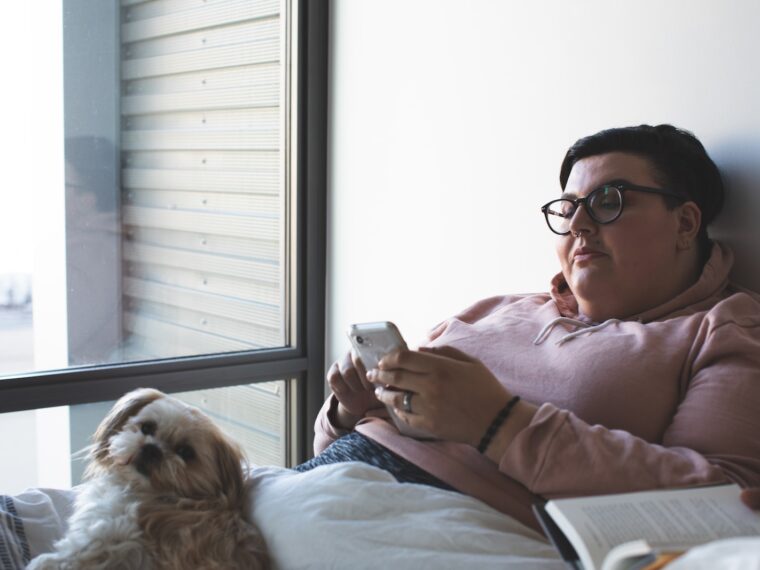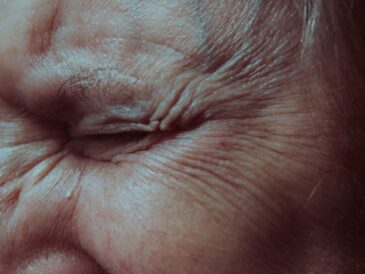Sleep positions can have a great impact on both overweight individuals and all others alike, but can have particular significance for overweight individuals. There are certain positions which are healthier than others that may help aid weight loss as well as other medical concerns.
One such position is the fetal position, which can help pregnant women or those experiencing hip or back pain find relief from discomfort. Furthermore, this position can prevent snoring and reduce acid reflux symptoms.
Side Sleeping
Sleeping on your side is the most popular and healthiest sleeping position, keeping the spine straight while relieving pressure from neck and back issues. Additionally, this may alleviate shoulder and hip pain as well as prevent snoring and sleep apnea as well as improve digestion by avoiding bloating, heartburn or constipation. Sleeping this way is especially good for pregnant women as it maximizes circulation between their fetus and mother – an added benefit that may even help with pain management during labor.
Certain individuals find it challenging to remain in this position. Aside from experiencing neck and back pain, they might also suffer numbness in their arms or legs as well as shoulder or hip strain. If this sounds familiar to you, try placing a pillow between your knees as this will help align the spine – pregnancy pillows or body pillows work great here!
Other advantages of side sleeping include reduced snoring as it keeps tongue and jaw from collapsing and blocking airway; side sleeping is also great for anyone suffering from sleep apnea, helping keep airways open; it is often recommended for pregnant women as it can help alleviate heartburn or acid reflux; furthermore it provides superior support to lumbar region of spine than stomach or back sleeping positions – though it might cause arm numbness if tuck under pillow!

Stomach Sleeping
At the end of a long day, sinking face-first into bed may feel like pure comfort – however, this position will only lead to pain when you wake up! Sleeping this way pulls down on the belly, strains the spine’s curvature, and forces the head back at an uncomfortable 90-degree angle, leading to neck strain.
Sleeping on one’s stomach poses several disadvantages, particularly to the lower back and hips by shifting too much weight into those areas and cutting off blood flow to other parts of the body. Furthermore, stomach sleeping can aggravate shoulder and neck pain for people who toss and turn during the night or suffer from sleep apnea/snoring disorders.
Though sleeping on your stomach can be detrimental to health, there are ways you can mitigate its difficulties. Try avoiding anything stomach-upsetting such as caffeine a few hours before bedtime; and always stretch regularly so as to release any tension or stress build-up in your body.
Stomach sleeping can be made more comfortable by placing a thin pillow (or none at all) under your pelvis or belly. This will keep your neck in an easier neutral position while sleeping and prevent your spine from curving too far forward.
Back Sleeping
Back sleeping is a natural, supportive position to sleep in according to orthopedic experts, helping distribute weight evenly across your back while avoiding curving of your lower spine and potential pain. For those accustomed to sleeping on their stomach or side, transitioning may take longer; in these instances, consider adding a pillow behind your head for support of your neck and head.
If you do decide to add a pillow, ensure it is thin to avoid further increasing pressure on your neck and face, which could result in fine lines or wrinkles known as sleep wrinkles.
Another alternative is adding a pillow under your knees to reduce the arch in your low back and alleviate lower back discomfort. Sleeping in the starfish position – similar to lying like five-legged sea creatures on your mattress – may provide more comfortable restful slumber, although this position takes up about 3/4 of bed space; so this should only be attempted alone or with someone who can tolerate such arrangements. To maximize comfort while minimising lower back discomfort when in this position. Be careful that feet remain spread apart as too much bending over may result in lower back discomfort caused by sleeping too long in this position!

Fetal Position
As your baby develops in its mother’s womb, they spend most of their time curled up in this position. Babies, children and even adults often sleep this way since it feels comfortable and familiar – though pregnant women may find sleeping this way uncomfortable and even increase shoulder pain.
As your due date approaches, your baby may adjust themselves into a position that makes moving through the birth canal easier for them. Though they might not always reach it perfectly, most babies settle into what’s called an anterior (front-facing) position – also called the occiput anterior position, or OA position in medical terminology – during the final month of gestation.
Fetal Position 1 (PC1) is typically optimal, though your baby could move to another one before labor starts – including being face-to-mama’s-belly (breech position) or transverse position.
If your baby is in an abnormal fetal position, such as breech or other awkward positions, a cesarean will likely be necessary to deliver them safely. A trained specialist may help during later stages of gestation but sometimes it is not possible to wiggle them back into a more ideal fetal position by doing certain exercises – though you might still try.




